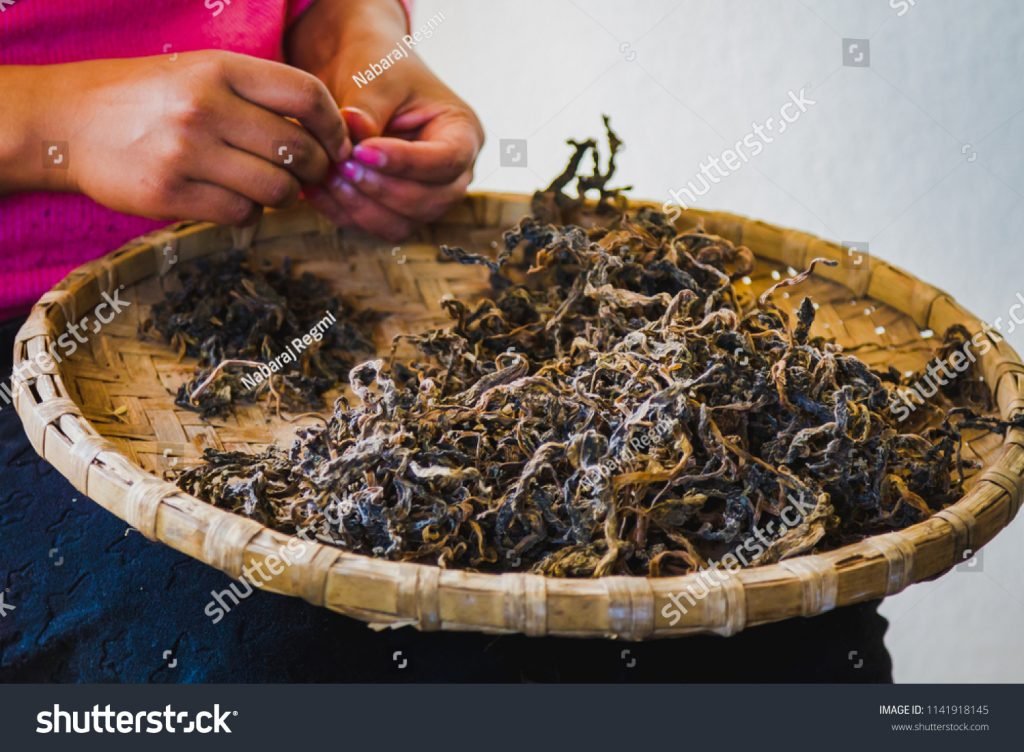Introduction
Fermentation is a natural anaerobic process which helps in break down of complex carbohydrate into simple sugars and metabolites like acetic acid, lactic acid, alcohol and carbon dioxide. Different types of microorganism like bacteria and yeasts are used on the fermentation process. Indigenous Fermented Vegetables are rich in nutritional properties and also acts as probiotic as it contains beneficial bacteria which helps in a wide range of health benefits like boosting immune system, improving digestive system, aiding weight loss and reducing heart diseases.
Fermentation is a classical method for the preservation of food as its shelf life duration ranges from 2-3 weeks to 5-6 years. Almost every fresh vegetables can be used for fermentation that provides nutrition when consumed in each meal throughout a year. Radish, cabbage, cauliflower, mustard and radish leaves, cucumber, bamboo shoot, tap root of radish are commonly used vegetables.
Health benefits of Indigenous Fermented Vegetables
- Presence of vitamins, minerals, enzymes that helps in absorbtion of essential nutrients and boosts immune system.
- Presence of beneficial bacteria that helps in balancing of gut bacteria and aids in digestion.
- Beneficial for weight loss as it is easy to digest and low in calorie.
- Promotes healthy skin by removing pathogenic bacteria and balancing pH of skin and may even protect from skin cancer.
- Reduces heart related diseases like high blood pressure, removes toxins and bad cholesterol.
Some common indigenous fermented vegetables:
- Gundruk
- Sinki
- Tama
- Sauerkraut
- Khalpi
- Kimchi
Indigenous Fermented Vegetables Production method
Gundruk and Sinki Preparation

- Take fresh green mustard or radish leaves
- Chop it into uneven pieces with the help of knife or hand
- Sundry the leaves for about 2-3 days on a clean plastic sheet
- Press tightly in a container or glass jar airtightly
- Place the jar in sun for a week until the fermentation is carried out by lactic acid bacteria
- Spread and sun dry it on the surface after the fermentation is complete for about 2-3 days
Microbiology of gundruk
- Heterofermentative lactobacilli mainly L. cellobiosus, P. pentosaceus carries fermentation initially for 3 days.
- Then, homofermentative lactobacillus commands over heterofermentative species – L. plantarum, P. pentosaceus carries fermentation afterwards.
Biochemical changes
- pH and acidity increases.
- Nitrogen content, sugar, asparagine,serine, glutamine, proline and tyrosine decreases.
- Level of palmitic acid, glutamic acid, cystine, methionine, glycine, alanine and lysine increases.
Tama/Mesu preparation:

- Take tender shoots of bamboo and remove its hard outer layer
- Chop the soft inner part into small pieces
- Wash and press tightly in a cylindrical vessel with an airtight lid
- Place in an upward position so that the its liquid makes the fermentation in anaerobic condition
- Leave for 7-15 days
Tama/Mesu
Microbiology of Tama
- P. pentosaceus dominated by L. brevis and L. plantarum on initial fermentation
- Pediococcus pentosaceus also ferments half of the fermentation process.
- The microbial load reaches to 1.66-2.66log cfu/ml in range until the complete fermentation.
Biochemical changes
- pH decreases but acidity increases
- Sugar, phytate content, saponin, alkaloid and hydrogen cyanide decreases wheras tannin content increases.
Sauerkraut Preparation

- Take a fresh cabbage and trim its head and remove its outer layer
- Wash it thoroughly and cut it imto small pieces, add salt and mix it
- Pack the shredded cabbage in a air tight container where the lactic acid bacteria starts the fermentation
- Leave it for about 7 days or more for a better flavour and texture
Microbiology of Sauerkraut
- Initial lactic fermentation by heterofermentative species- Leuconostoc mesenteroides.
- Later, Lactobacillus plantarum and Lactobacillus brevis dominates the fermentation at high temperature.
Biochemical changes
- Autochemical reaction also occurs by the intrinsic enzyme during the fermentation of cabbage.
- Cis-hex-3-ene-l-ol and alkyl isothiocyanate increases as volatile compounds.
Khalpi preparation

- Take a ripe cucumber and cut it into small pieces
- Sun dry for 2-3 days and season it with spices- salt, turmeric and chilli
- Put into a vessel with oil and air tight the lid
- Leave for fermentation at room temperature for about a week
Microbiology of Khalpi
- Initial fermentation by heterofermentative lactic acid bacteria- L. fallax, L. brevis and L. pentosaceus
- Second fermentation by homofermentative lactic acid bacteria- Leuconostoc fallax, L. plantarum.
- After fermentation, population of microorganisms increases to 107 cfu/g in final product
- Yeast count increases to 0.2log cfu/g after a week of fermentation.
Biochemical changes
- At the end of the fermentation after 20 days, pH level drops and titrable acidity increase. Similarly, total sugar percentage also decreases.
Kimchi Preparation

- Take a baechu cabbage and wash it thoroughly, chop, add salt and leave it for 12-24 hours
- Wash and rinse to remove the excess salt
- Take grated garlic, ginger, chili pepper, jalapenos and mix in a plastic bowl making sure to coat the cabbage with the mixture
- Place in a clean and air tight glass jar and add water if necessary
- Leave for fermentation
Microbiology of Kimchi
- In an immature stage, L. mesenteroides is observed and later L. plantarum and L. sakei dominates the fermentation.
- Lactic acid bacteria related to fermentation is based on degree of temperature and periodic varitation.
- Low temperature – Leuconostoc citreum, Leu gasicomitatum, Leu gelidum
- High temperature – Lactobacillus brevis
Biochemical changes
- Redox potential, amylase and protease increases at the first stage and gradually decreases during increase in fermentation.
- Starch gets hydrolyzed to simple sugars and organic acids.
- Malic, fumaric, lactic, succinic, malonic, oxalic, glycolic, citric and tartaric acids are produced when fermentation is carried out at low temperature around 4-6°C.
- Sour odour is produced by acetic acid and propionic acid, these are volatile organic acids.
- Glutamic acid, aspartic acid and lysine provides characteristic taste.
Learn more
Refrences:
- https://www.healthline.com>nutrition
- http://bossnepal.com/making-gundruk-sinki/
- https://www.culturesforhealth.com/learn/recipe/natural fermentation/sauerkraut/
- https://www.researchgate.net/publication/305910449_Ethnic_Fermented_Foods_of_Nepal
- Park, K.-Y., & Jeong, J.-K. (2016). Kimchi (Korean Fermented Vegetables) as a Probiotic Food. Probiotics, Prebiotics, and Synbiotics, 391–408. doi:10.1016/b978-0-12-802189-7.00026-5
- Cheigh, H., Park, K., & Lee, C. Y. (1994). Biochemical, microbiological, and nutritional aspects of kimchi (Korean fermented vegetable products). Critical Reviews in Food Science and Nutrition, 34(2), 175–203.
- https://www.biologydiscussion.com/fermentation/sauerkraut-fermentation/sauerkraut-fermentation-process-microbiology-defects-and-spoilage-industrial-microbiology/86694